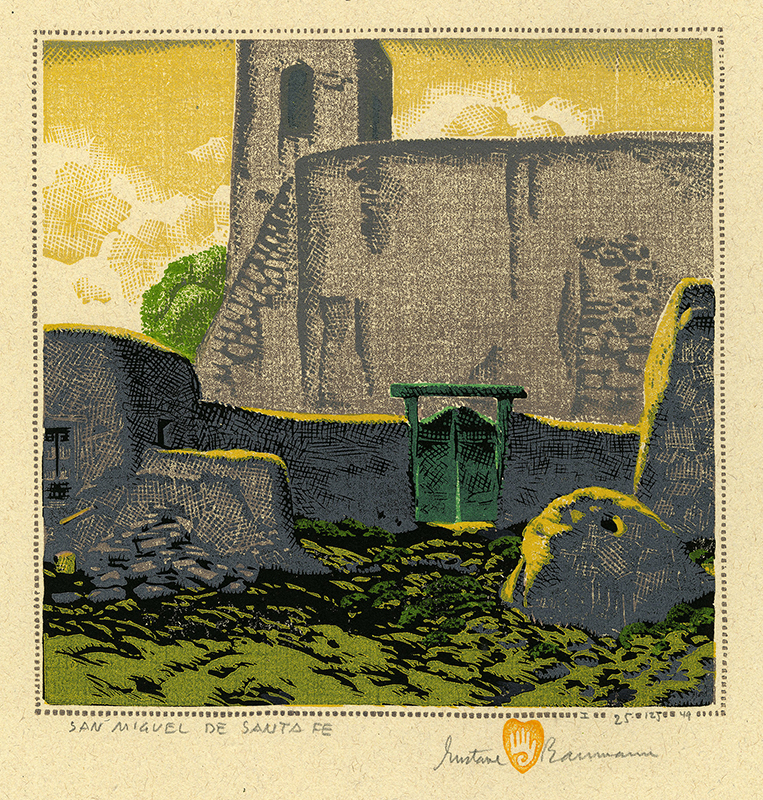San Miguel de Santa Fe is a color woodcut from 1949 by American master printmaker Gustave Baumann (1881-1971). Baumann began printing his blocks in February 1949 but only printed 58 impressions. This impression is pencil signed, titled, and editioned I 25-125 '49. It was printed by the artist on cream Ansbach wove paper. Since Baumann printed less than half of his projected edition, most impressions bear the roman numeral I. The image measures 8 x 8-1/8 inches.
The reference for this work is Chamberlain 175. For an explanation of the printing record for this color woodcut and the number of blocks used, we refer you to page 433 of In A Modern Rendering The Color Woodcuts of Gustave Baumann: A Catalogue Raisonné. This impression is illustrated on page 432.
San Miguel is a Spanish colonial mission church in Santa Fe that was built by Don Pedro de Peralta, governor of New Mexico between 1610 and 1626, as a chapel for the Tlaxcala Indians, soldiers, and citizens. The original adobe walls and altar were built by the Tlaxcalan Indians from Mexico under the direction of Franciscan Padres. It was built in the Barrio de Analco, a national historic district of Santa Fe. The chapel was partially destroyed in the Pueblo Revolt of 1680. The present building dates to 1710, but it has undergone significant structural changes over the centuries. The bell tower was added in 1848.
Gustave Baumann was born in Magdeburg, Germany on 27 June 1881. Ten years later his family immigrated to the US, settling in Chicago. In 1896, Baumann began working in the commercial art field while saving money to study in Germany. After returning from Munich in December 1905 where he studied at the Kunstgewerbeschule, Baumann worked again in commercial art to support his family. In 1909, he discovered Brown County, Indiana where life was inexpensive and he could stay for three months. He produced a series of small format color woodcuts featuring the people and places of Brown County and then produced five large format color woodcuts. His woodcuts were accepted by the committee for the 1915 Panama Pacific International Exposition and he won a gold medal in 1916. Baumann headed east to Wyoming, New York in 1917 and taught at a summer school. From there he headed to Provincetown and New York City before returning to set up his studio in Wyoming. The southwest beckoned and he headed west in May 1918, stopping in Taos for the summer and fall. His funds were low and he needed to head back to Chicago but first stopped at the new art museum in Santa Fe to see an exhibition of his woodcuts. The rest, they say, is history.



